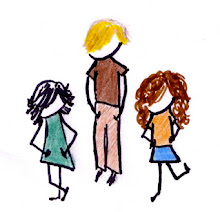
When I was a student on backpacking trips to Europe, drinking Fanta was a tiny ritual that fit my budget nicely. While most Europeans probably grew up on the stuff, my first tastes of Fanta were during these epiphanous first tastes of travel. I drank it while picnicking along the Seine, exploring Dover castle, watching canalboats in Amsterdam.
Of course, on these trips, I drank other things too. Loads, if I recall correctly. But amidst beers and wines and coffees, Fanta was the newest to my palette. Though the drink is as ubiquitous as juice on every continent, it is virtually unknown in my native Canada.
Tastes are often associated with memory. It's why we crave our mothers' cooking when we're sick. It's why everyone loves birthday cake. For me, Fanta evokes that giddy far-from-home feling, of backpacks and passports and guidebooks. It represents the amiable broken-English chats with absolutely anyone who will chat back. It represents eating cheap picnic lunches on the steps of pricey museums to balance out the funds for the day. For me, Fanta represents adventure; a symbol of the world beyond Canada, of flying away from the familiar and into the throes of the unknown.
Of course, I've gotten older. I've traveled further than Western Europe, and I've lost a bit of tolerance for shabby hostels and cocky gap-year Australians. But wherever I go, I always track down Fanta in these new destinations, and for tradition's sake, I always make sure to imbibe.
I was traveling with a friend in China when I became briefly enamoured with green apple Fanta; a local flavour that was as new to my palette as peking duck. M friend and I had travelled and consumed Fanta together on three continents so far, and had spent many a long bus ride singing the drink's praises. On one ambling walk through Beijing, we cooked up the idea of a Fanta-finding website. People could research the local Fanta flavours of travel destinations around the world. Had this site existed (and not just in the imaginary realm), we would have known that China also sells beetroot and orange-mint Fantas, and that an intriguing toffee-flavoured variety was sold in Taiwan, mere kilometres away.
Fanta flavours, after all, can give us a glimpse into the local palette. Who but the most popular fruits and flavours get idolized into soft drink form? Plum and lychee Fantas are sold in Japan. A handful of Scandinavian countries sell elderflower Fanta; Mexico boasts a tamarind-flavoured option; Grenada sells banana Fanta, and lucky Romanians can sip a seasonal cinnamon-rum Christmas Fanta.
In Thailand, two regional Fantas are so locally-targeted, their names don't translate. Simply, they are "green soda," based on a popular Thai jelly, and "red soda," flavoured like the homegrown sala fruit. Visitors to Thailand will see open bottles of the drink on Buddhist altars outside people's homes. Of course, this is not a worship of Fanta itself, but a gesture of Buddhist faith. The red soda variety is a known favourite of the King of Thailand, and bottles of the drink are now used in religious offerings as a nod to His Majesty.
It's local facts like these which have me happily maintaining my Fanta-drinking tradition. While the new flavours are exciting to try, my taste for Fanta is as symbolic as it is literal. To drink Fanta is to drink abroad, and for me, these travels can be as addictive as any sugary indulgence.









